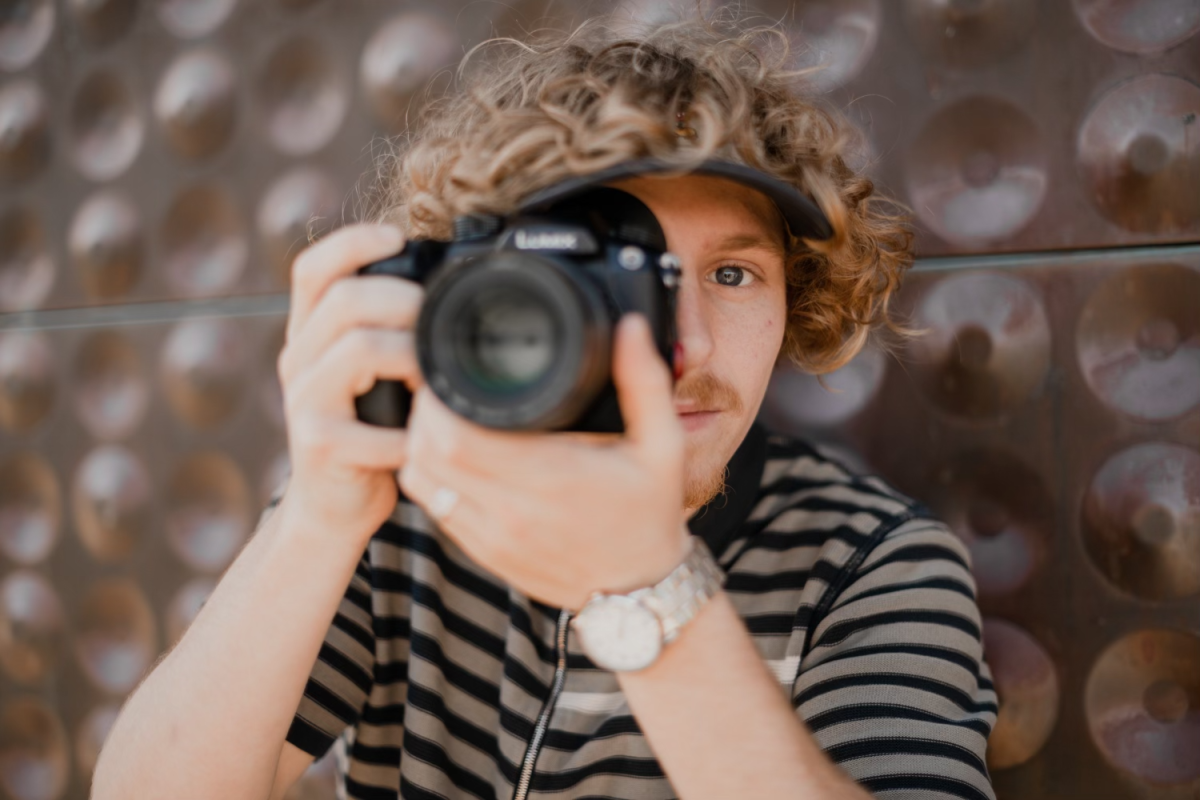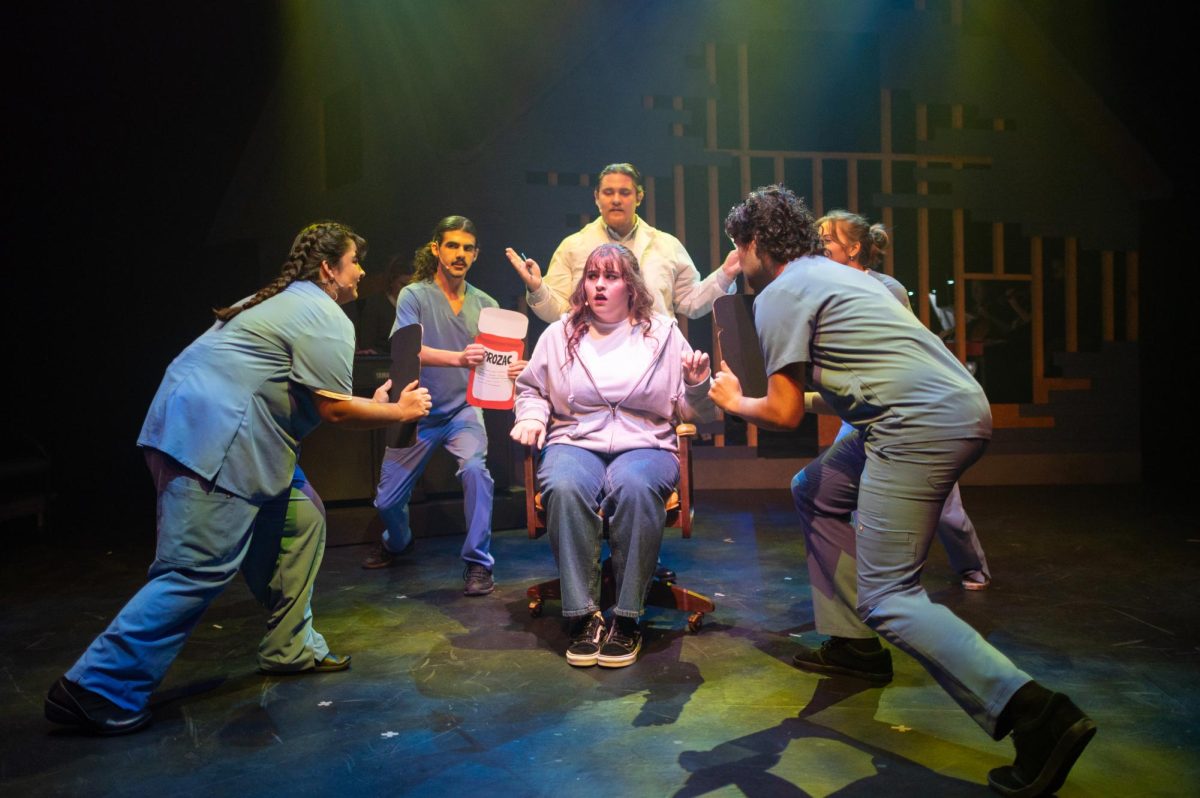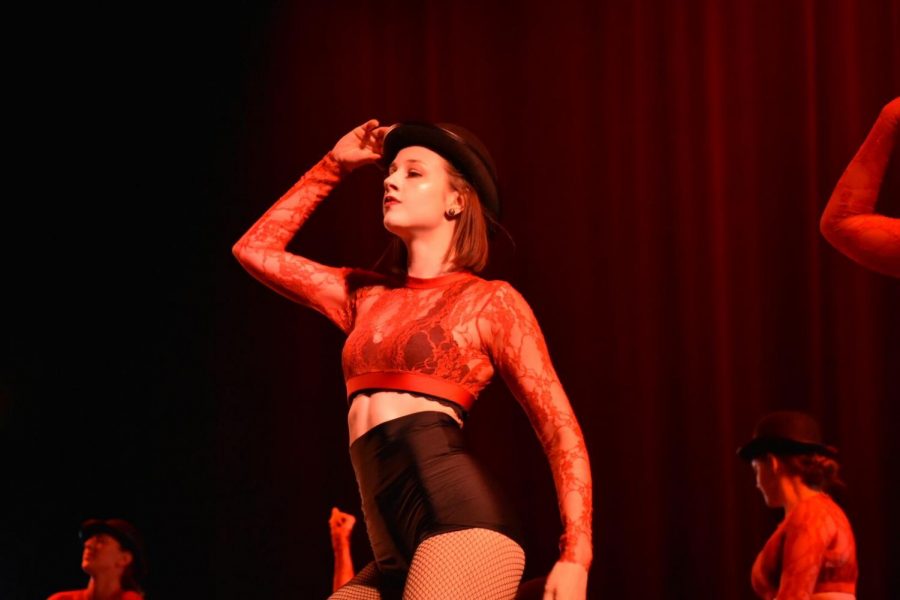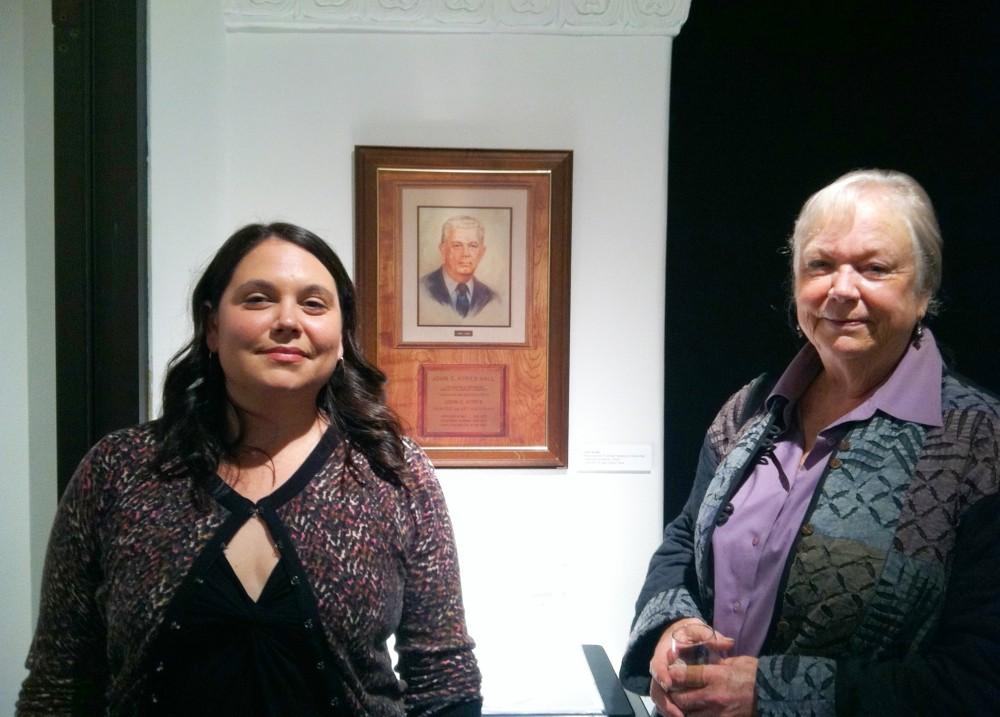
Sharp, precise lines intersect, making shapes on a piece of white paper. The watercolor shapes overlap, forming a building that looks like the Emerald City from “The Wizard of Oz.”
There is no bleeding. There are no imperfections.
This year celebrates the centenary of the artist of that piece, whose name is all over campus, although his story remains unknown to most. Professor Emeritus John C. Ayres was not only an incredible artist, but also the dedicated teacher who developed the art department at Chico State.
A collection of his artwork, guest curated by Ayres’ former student and art collector Reed Applegate, will be displayed at the University Art Gallery until Dec. 18.
“It’s because of John Ayres that the art students are here in the first place,” Applegate said.
Born in 1914, Ayres grew up in Modesto and achieved his master’s degree in art from UC Berkeley. After graduating in 1936, Ayres taught at several schools before accepting a position at Chico State in 1946.
At the time, Chico State was mainly a teacher’s college with only 50 faculty and 700 students. President Aymer J. Hamilton wanted to expand the departments to full accreditation, and hired Ayres as the chair of the art department.
In addition to hiring art teachers, one of whom was Janet Turner, Ayres also taught art history, medieval art and studio painting.
Back then, the art classes were held in Bidwell Mansion, Applegate said.
“When teaching art history, (Ayres) showed slides in the dark because he was kind of shy,” he said. “I still have all the notes and the books from his classes.”
Ayres was a father figure to some faculty members, Applegate said.
And even before Ayres began making strides at Chico State, he was highly praised for his own artwork.
In early 1943, at Ayres’ first show in San Francisco, Alfred Frankenstein, a well-known art critic for the San Francisco Chronicle, said Ayres was very talented and probably one of the best watercolorists in this part of the world, Applegate said.
Ayres wasn’t even 30 years old at the time.
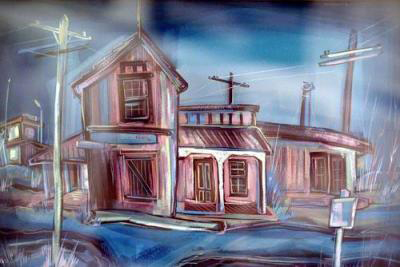
Ayres’ daughter, Jean Ayres-Clark, remembers her father as being very reserved.
“He never talked about his art,” she said.
He was not the stereotypical artist, and he kept things very neat, Ayres-Clark said.
“He always wanted things just so,” she said. “He wouldn’t even let my mom decorate anything in the house without his approval.”
Ayres was fascinated by architecture, Applegate said, which is evident in his later works.
“Personally, I think he should have been an architect,” Ayres-Clark said.
His structural watercolor paintings display meticulous technique. It must have been quite the process waiting for one layer of watercolor to dry before applying the next so the colors wouldn’t bleed together.
Watercolor is a difficult medium, because it tends to have a mind of its own. But like an architect, Ayres had the patience to master his material in order to create a masterpiece.
In fact, Ayres actually designed some houses to cut costs on his home in Chico. On Berkeley Lane, a street in Chico that Ayres named after his alma mater, there still remain some houses he designed.
Travel was another thing that inspired Ayres’ artwork.
Ayres-Clark said he especially liked British boats because of tea time.
“We traveled a lot, and he would take pictures and then he would paint from the pictures,” Ayres-Clark said.
Ayres was so passionate about traveling that he and another teacher organized the first trip for students to Europe in 1954, Ayres-Clark said.
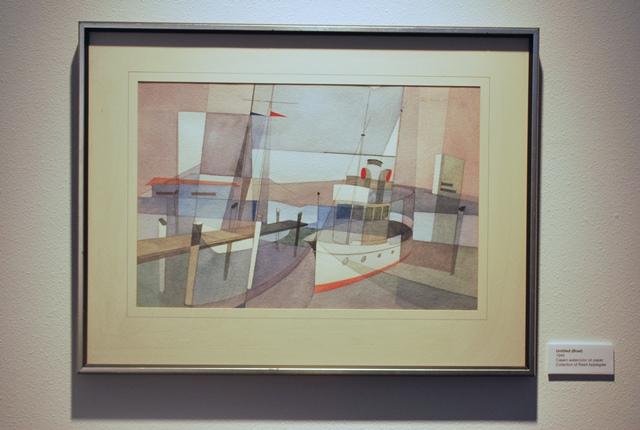
The current chronologically-organized exhibit for Ayres, whose artwork has been featured at the de Young Museum and the San Francisco Museum of Modern Art, is not to be missed.
Some of the pieces his daughter hasn’t even seen in over 50 years, she said.
From his earlier, more figurative work, to his later, more structural work, it’s clear why the building that houses the art and art history departments on campus is named after Ayres.
“(People should) realize that he’s more than just a name on the building and a portrait in the hallway,” Applegate said.
[box]
Exhibit Details
- Date: Monday-Friday through Dec. 18
- Time: 9 a.m. to 5 p.m.
- Location: University Art Gallery in Trinity Hall
- Price: Free
[/box]
Emma Wood-Wright can be reached at [email protected] or @emmawoodwright on Twitter.




